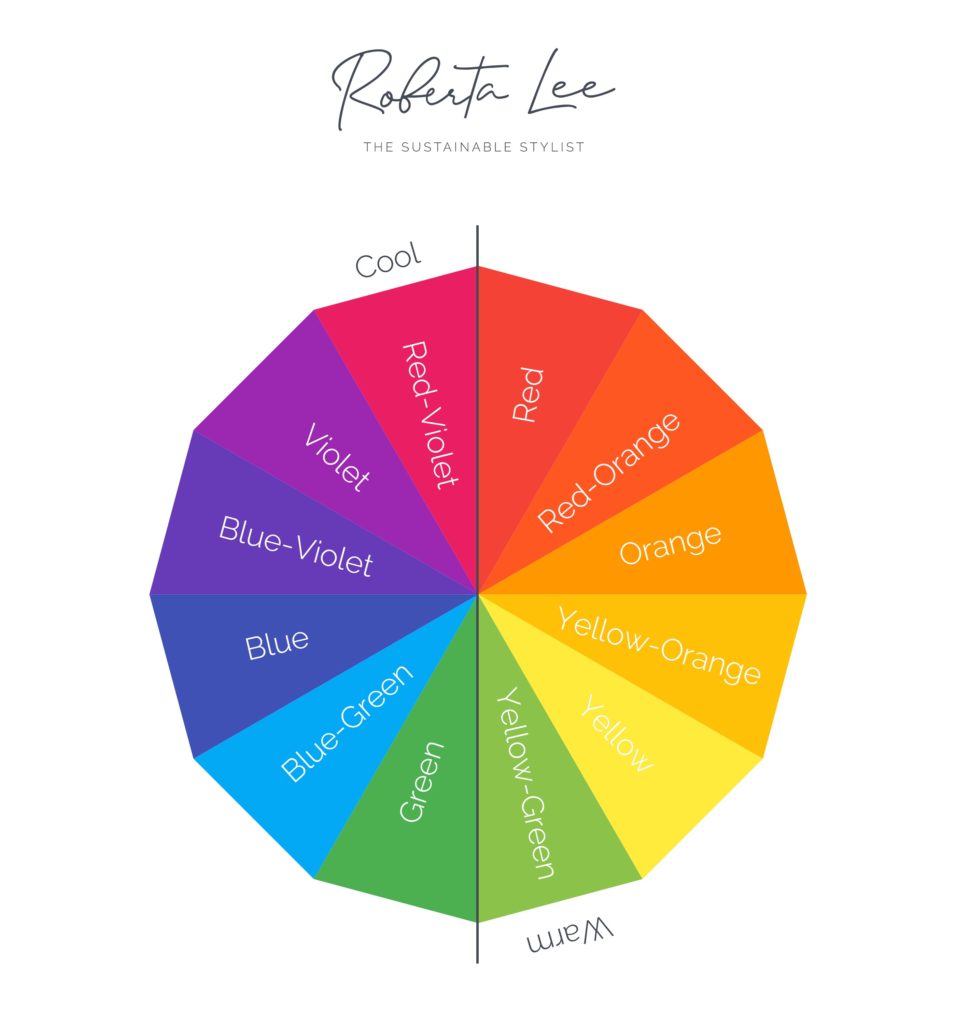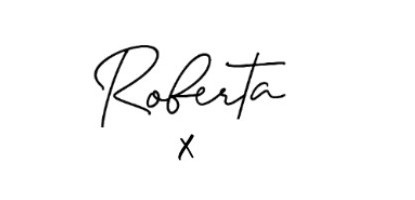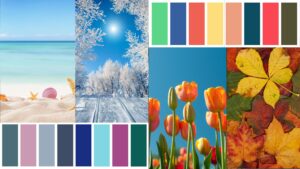“But how do you know what colours are cool?” – I get asked this a lot. Defining cool colours and knowing the difference between warm colours, is a key part of creating a wardrobe that works and finding colours that flatter your complexion.
In this post, I share everything you need to know about cool colours: what they are, examples of cool colours, how to wear them and who should wear them.
“The best colour in the whole world is the one that looks good on you! – Coco Chanel.
Have you ever worn lipstick that made your skin glow and your eyes brighten? Only to try another similar shade and find your skin looking dull, and washed-out and your imperfections more noticeable? Well, there’s a reason for that. It depends on the cool or warm undertones in your skin. So how do you know whether you’re more cool-toned or warm-toned? And what does it actually mean?

How can I tell if a colour is cool?
Cool colours are those that have a blue undertone and can appear to have a lot of white added.
Try thinking about a cold, bright, white and crisp winter’s day – everything has a hint of cold blue or white to it. When you look at the colour wheel you can see that colours are split into warm or cool-based colours, but don’t let that confuse you.

When we refer to cool and warm colours in colour analysis we are referencing a season that is defined as cool, such as cool winter or cool summer. These seasons encompass all of the colours shown on the colour wheel, even those we define as warm (confused yet?). The reason a cool season can wear a “warm” colour is because there are ‘cooler’ versions of these colours.
For example, green is typically defined as a “warm” colour but there are cooler shades of green. Look at a cool green versus a warm green…

Can you see how the cool green appears to have more ‘blue’ in it and just feels cooler, and the warm green is more ‘yellow’ and has an overall warmth to it?
Think about painting. If you were creating a winter scene, you’d go for clear crisp white + mix in a bright blue to make it look cold. If you were painting an autumn scene you’d want the warmth of the sun to show, so you’d mix in lots of yellow.
Spotting these subtle differences in colour can be quite tricky to the untrained eye. If you struggle with colour, working with a colour analyst may be the best option for you. If you are London-based and are happy to go on the waiting list, I would be happy to help you. You can enquire about my VIP services here.
How do I use the colour wheel?
You can use a colour wheel to help you identify harmonious colour combinations. For example, complementary colours work well together. These are colours that sit opposite each other on the colour wheel, such as blue and orange or red and green. Colours that sit side-by-side such as green, yellow and orange look great. However, if you want a colour wheel that has colours defined for your specific SEASON then you may be interested in enrolling on my online course, where you’ll receive season-specific examples on the handouts.
Examples of Cool Summer Colours
- Soft white
- Rose Beige
- Cool browns
- Pretty pinks
- Watermelon red
- Blue-green
- Blue

Examples of Cool Winter Colours
- Greys
- Bold bright clear & Icy blues
- Bold bright & Icy pink
- Crisp fuchsia
- Loud purple
- Bright burgundy
- Bold bright clear greens
- Black
- Crisp Snow White

How to Wear Cool Colours
Colours can clash if you don’t pair them correctly. As a general rule of thumb, try to combine cool undertones together (and the same goes for warm undertones), otherwise, your outfit will feel off. That said, once you understand the colour basics you can experiment with tonal dressing, which often includes different shades of the same colour worn head to toe.
But this doesn’t mean your colour choices are limited. You can experiment with contrasting or complementary colours for a bold look – just make sure that you match the intensity and undertones of the colours. For example, if you look best in muted cool colours pair a pastel blue with pastel pink (left), or if you look better in bold bright cool colours go for a bold clear green with fuchsia pink (right). These pairings follow the ‘intensity’ of the colour – the left is cool and muted while the right is cool and bright.

You can see just how striking ‘COOL’ colour pairings can be when you play around with the intensity. Try pairing the same colours in differing intensities for another bold look (below). If you want to experiment with colours from another season, always remember to wear your SEASON closet to your face.
Let’s say you’re a Warm Autumn, you’d want to wear this season on top and if you want to wear Warm Spring colours you should wear these as trousers or accessories. You want to keep Warm Spring colours away from your face as the intensity will fight for attention with your natural complexion.

DISCOVER YOUR WOW COLOURS
If you’re London or Hertfordshire-based and would like to find out about 1:1 or group colour analysis experiences get in touch

Who Should Wear Cool Colours?
If you’ve done colour analysis and have been told you are a cool summer or a cool winter, then wearing colours that are cool will be best suited to your skin’s undertones. That’s not to say that colours that are defined as ‘warm’ on a colour wheel aren’t for you, you just need to find the ‘cooler’ versions of these colours.
If you are unsure about your undertones you can do a DIY test at home and see if cream or white looks best on you. White = Cool and Cream = Warm.
Who Has Cool Skin Tones?
There are plenty of cool-toned celebs who pull off their colours well. Some may be quite obvious – and a few may surprise you.
Contrary to what you’d expect, Naomi Campbell is cool-toned, at the opposite end of the spectrum you have the English rose also cool Anne Hathaway. Then the tanned and very warm-looking Liz Hurley wears black really well, so I’d say she’s likely to be cool too. Courtney Cox-Arquette is a great example of someone with cool tones who looks great in bold colours.
And finally, an example for the gentleman would be Mr Simon Cowell.
Did you guess any of these cool-toned celebs? Can you think of any more? Share your favourite “cool” celebs in the comments below.





